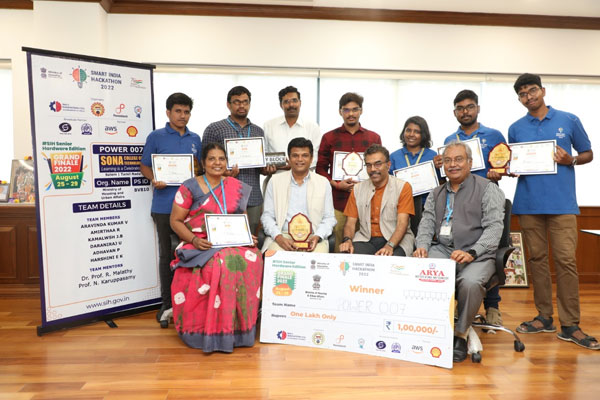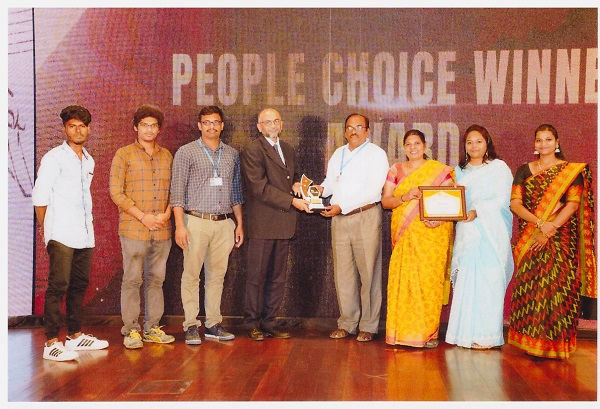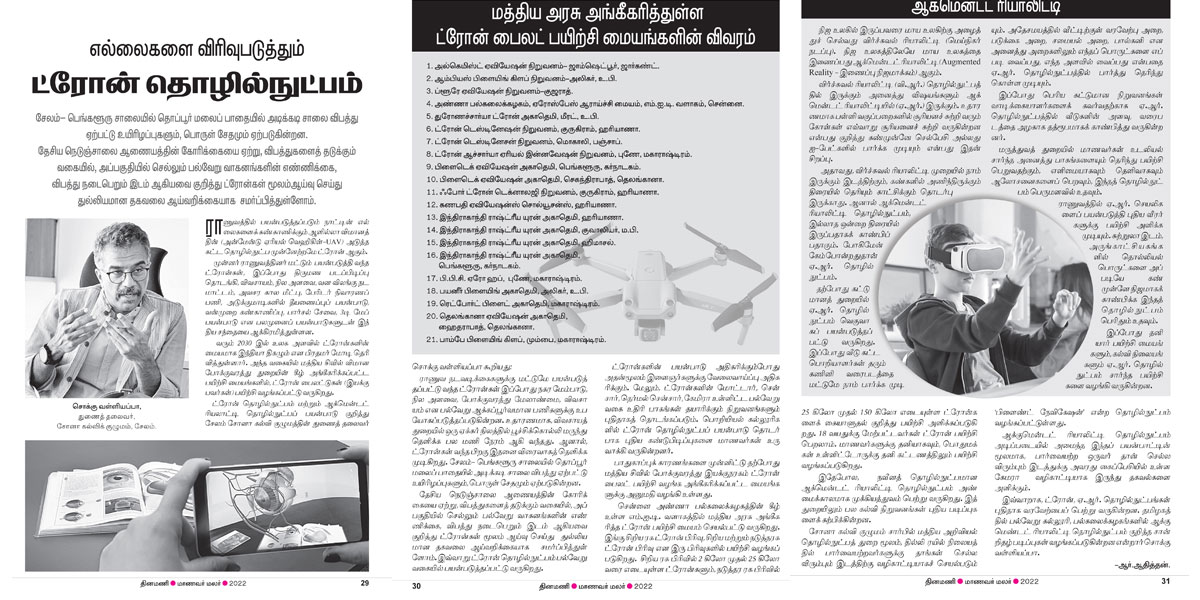

NAAC-Accredited 'A++' - Grade 2(f) & 12(B) status (UGC) |ISO
9001:2015 Certified | FIST Funded (DST) SIRO(DSIR)

Innovations in Teaching and Learning Process
In Civil Engineering department, the following innovations are followed in teaching and learning process.
- Project Expo
- Poster presentation
- Site Visit
- Models
- Seminar Presentation
- Quiz
- Mobile app
- Mind Mapping
- Flash Cards
- Online tools
- AR & VR
- Virtual Lab
- Mapping of SDG
- YouTube videos
- Plickers
- Crossword puzzles
- Placement card
Project Expo
Project Title: Eco-Friendly and Sustainable Solid Bricks From Sanitary Napkin Burnt Ash
Description: A method of manufacturing low-cost solid bricks for construction by partially replacing cement with ash obtained from burnt sanitary napkins. This product was filed for a patent (Application No: 202341086657) on 19/12/2023 and published.
Team Members:Rathna K, Subhashini V, Krithika S, Tejal V G and Sarath Prasath.
Team Mentor:Dr MNA Gulshan Taj, Professor, Department of Civil Engineering
Impact Analysis: Students will have a platform to showcase their products, technologies, or research, increasing visibility, opportunities for collaboration, and market expansion. Invention relates to a method of manufacturing low cost solid bricks for construction by partially replacing cement with the ash obtained from the said burnt sanitary napkin. Student file a patent on this product under the title of” A method of manufacturing Eco-Friendly and Sustainable Solid Bricks From Sanitary Napkin Burnt Ash” with application number 202341086657 on 19/12/2023.Its also get published.
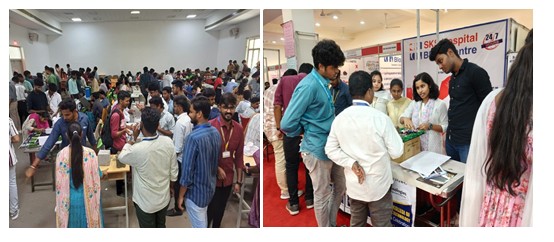
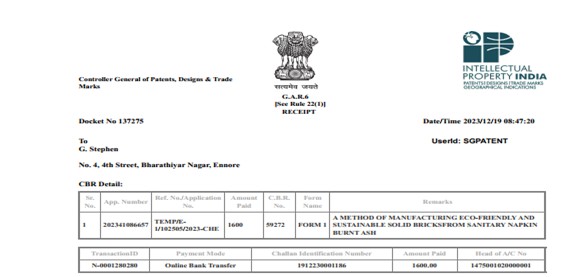
Poster Presentation
Team Members:Mr. Abishek Kumar S S , Likith Kumar, Shree atavind & Ms. Meghavarsha K S
Team Mentor:Dr. N. Karuppasamy, AP/Civil
Impact Analysis: Presenters can improve their communication and presentation skills as they explain their poster content. The event can facilitate networking opportunities with peers, mentors, and potential collaborators. The student have won third prize in project expo 2024 for the poster presentation on “Crown Cork Concrete” held on 29/02/24.
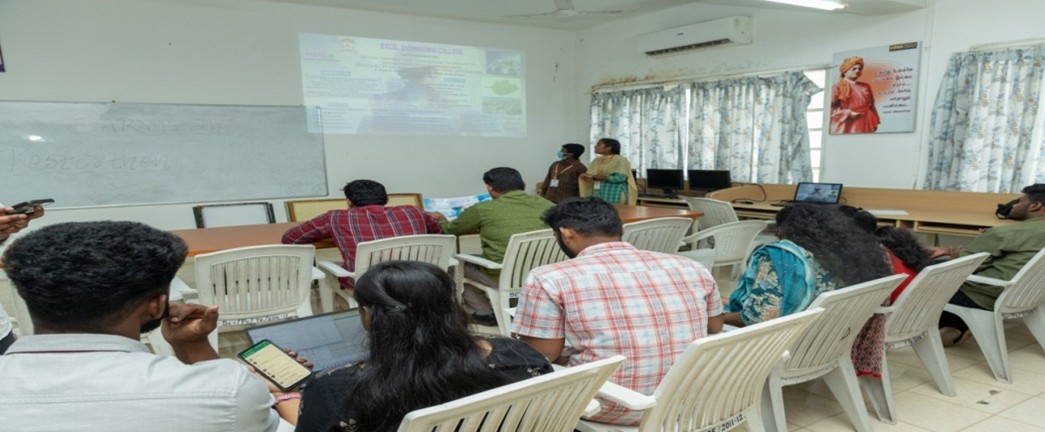
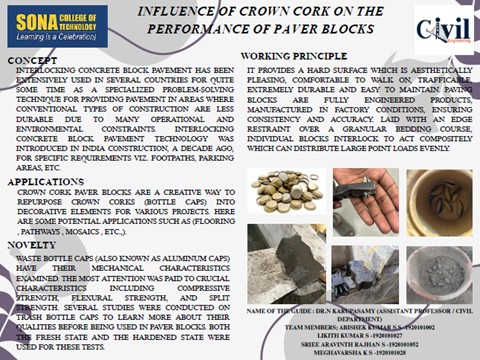
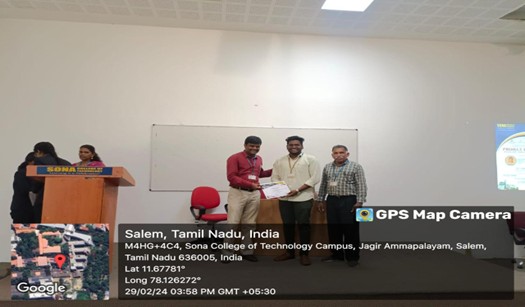
Site Visit
Impact Analysis: Visiting a site helps bridge theoretical knowledge with practical implementation, deepening participants' understanding. Attendees' questions and interactions can provide valuable feedback or new perspectives on operational challenges or areas of improvement.Our third year civil students designed a project entitled on “Eco Sponge City - Bengaluru” and won first prize in Bengaluru Eco Summit 2025 on 30/08/2025.
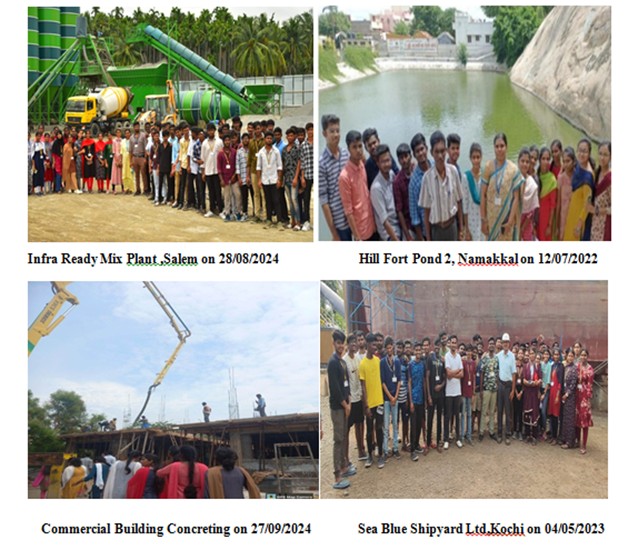
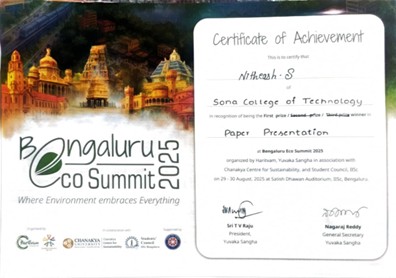
Models
Impact Analysis: Innovative teaching models, such as flipped classrooms, gamification, or experiential learning, tend to engage students more effectively. These methods encourage active participation, critical thinking, and real-world application of knowledge.Subject Code: U23EGR107-Engineering Graphics- Students dramatically improve their ability to mentally rotate, slice, and manipulate 3D objects and predict their 2D views (orthographic projections). This is the core competency of engineering graphics. Models make the invisible mental process tangible, allowing students to physically check their thinking.
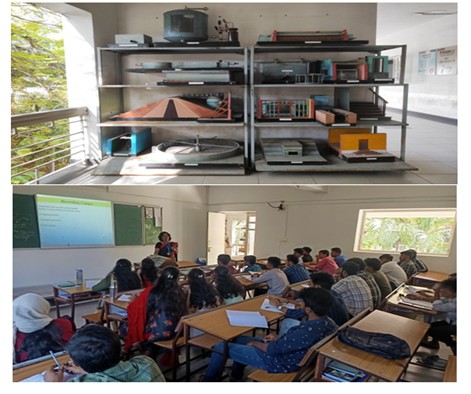
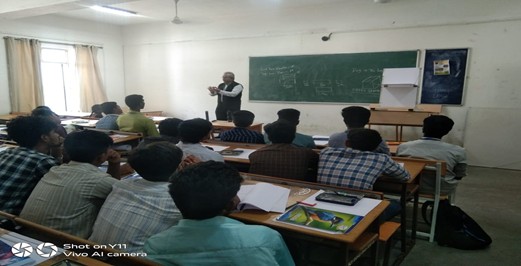
Seminar Presentation
Impact Analysis: Seminars encourage discussions, debates, and problem-solving activities, leading to better comprehension. Unlike traditional lectures, students actively engage in the learning process by sharing ideas and presenting viewpoints. Our student participated and delivers the keynote address on “Crashstory - Facts behind structural failures” in the seminar presenation at Fiestaa'25, conducted by KPR Institute of Engineering and Technology.
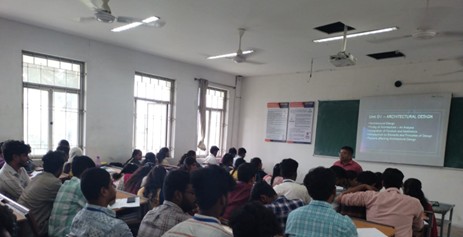
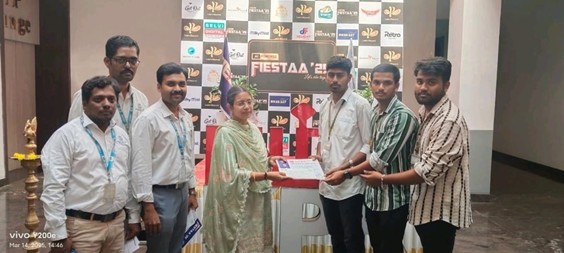
Quiz
Impact Analysis: Quizzes make learning interactive, breaking the monotony of traditional lectures. Competitive elements (e.g., leaderboards, timed quizzes) make learning more exciting.
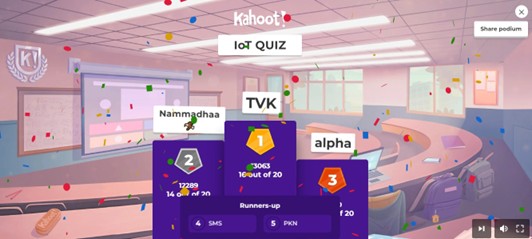
Mobile App
Impact Analysis: Mobile apps allow students to learn at their own pace and convenience. Videos, animations, and AR/VR experiences help in better visualization of concepts.
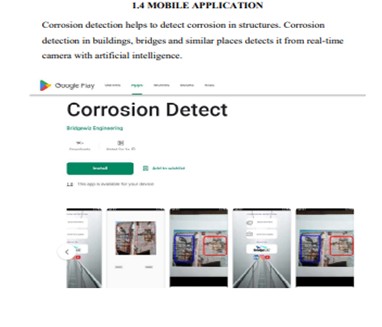
Mind Mapping
Impact Analysis: Mind maps present information in a structured and engaging format. Helps students see relationships between different concepts, enhancing learning depth which helps in breaking down complex topics into simpler, manageable parts.
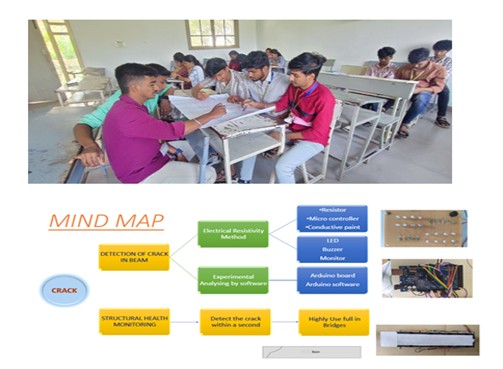
Flash Cards
Impact Analysis: Encourages students to retrieve information, strengthening memory. Cards with definitions, formulas, or key facts help students think analytically. Low-pressure, interactive exercises help shy students participate actively.
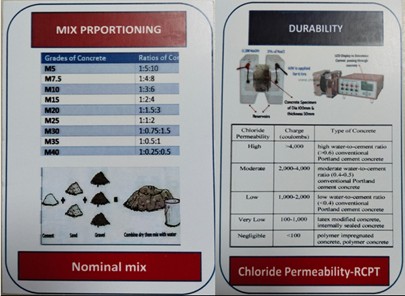
Online Tools
The integration of online tools in civil engineering projects has transformed traditional teaching and learning methodologies. These tools enhance design, collaboration, analysis, and project management, making engineering education more interactive, efficient, and innovative. With the advancement of cloud computing, artificial intelligence (AI), virtual reality (VR), and big data analytics, students can now gain hands-on experience in a digital environment before working on real-world projects. Online tools such as Autodesk Civil 3D, Revit, STAAD Pro, BIM 360, and MATLAB allow students to visualize, simulate, and analyze structures effectively. By incorporating these tools into civil engineering education, students develop technical skills, problem-solving abilities, and industry-relevant expertise, preparing them for the future of smart infrastructure development.
Impact Analysis: Tools like Revit, AutoCAD, and Civil 3D help students visualize designs. Helps bridge the gap between academia and real-world engineering practices.
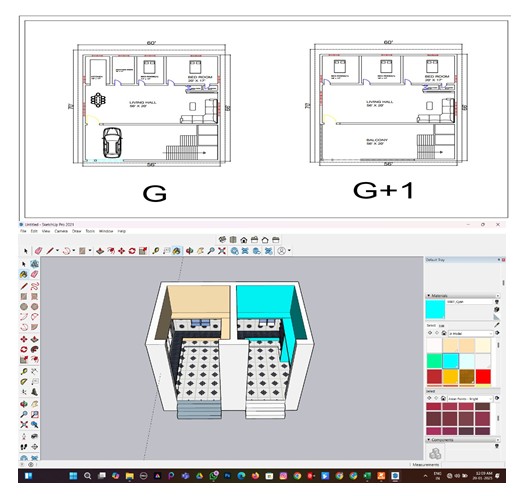
AR and VR
Augmented Reality (AR) and Virtual Reality (VR) are revolutionizing education by making learning immersive, interactive, and engaging. These technologies allow students to visualize complex concepts, conduct virtual experiments, and explore real-world environments without leaving the classroom. This analysis explores the benefits, challenges, and best practices for integrating AR & VR into teaching. Prof S. Saranya well trained in this technology and it has been implemented into the student’s projects.
Impact Analysis: AR/VR enables students to explore anatomy, architecture, physics, and engineering in a highly detailed, hands-on way.
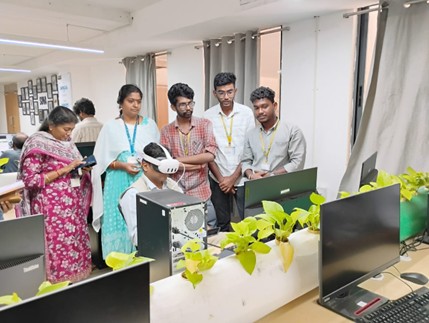
Virtual Lab
Visual Labs leverage digital simulations, virtual experiments, and interactive animations to enhance learning experiences across various disciplines. They provide a realistic and immersive environment for students to observe, analyze, and experiment without physical constraints. This analysis explores the benefits, challenges, and best practices for integrating Visual Labs into education. Digital labs help students design prototypes, test materials, and simulate stress conditions.
Impact Analysis: Students can explore microscopic structures, architectural designs, and complex machinery in detail.
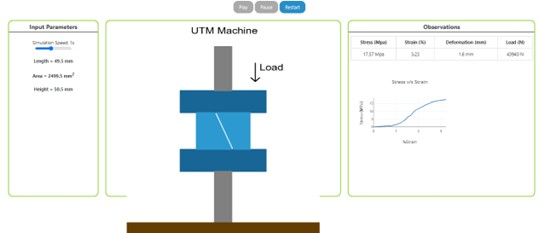
Mapping Of Sustainable Goals
Impact Analysis: In essence, sustainability mapping ensures that civil engineering projects contribute positively to the environment, economy, and society, creating long-lasting value
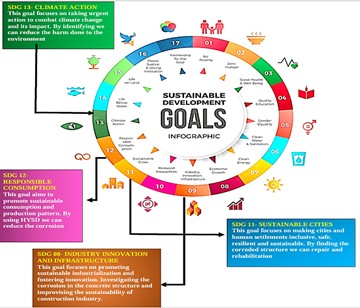
YouTube Videos
Impact Analysis: The Department of Civil Engineering has its own YouTube channel to enhance the technical knowledge and practical skills of students. The channel features lecture videos, lab demonstrations, expert talks, project showcases, and software tutorials. It serves as a valuable platform for continuous learning beyond the classroom, helping students stay updated with the latest innovations and industry practices. This initiative promotes interactive and accessible learning for aspiring civil engineers.
YouTube Channel: Visit Channel
| S.no | Video Description | Video Link |
|---|---|---|
| 1 | The future of robotics in construction industry | Watch Video |
| 2 | Prediction of building strength using machine learning algorithm | Watch Video |
| 3 | Application of drones in Civil Engineering | Watch Video |
| 4 | Digitalization in maintenance and operation | Watch Video |
| 5 | Prefabricated construction for mass housing | Watch Video |
| 6 | Application of AR & VR | Watch Video |
Plickers Activity in Teaching
Impact Analysis: The implementation of the Plickers teaching method has significantly improved student engagement and participation in the classroom. It encourages active learning, as every student is involved in answering questions and reflecting on concepts. Teachers are able to instantly assess student understanding and provide immediate feedback, which enhances the overall learning experience. The use of Plickers reduces the dependency on electronic devices, making it cost-effective and inclusive. It also helps in identifying weak areas among students and supports data-driven teaching improvements. As a result, both teaching effectiveness and student performance have shown noticeable improvement.
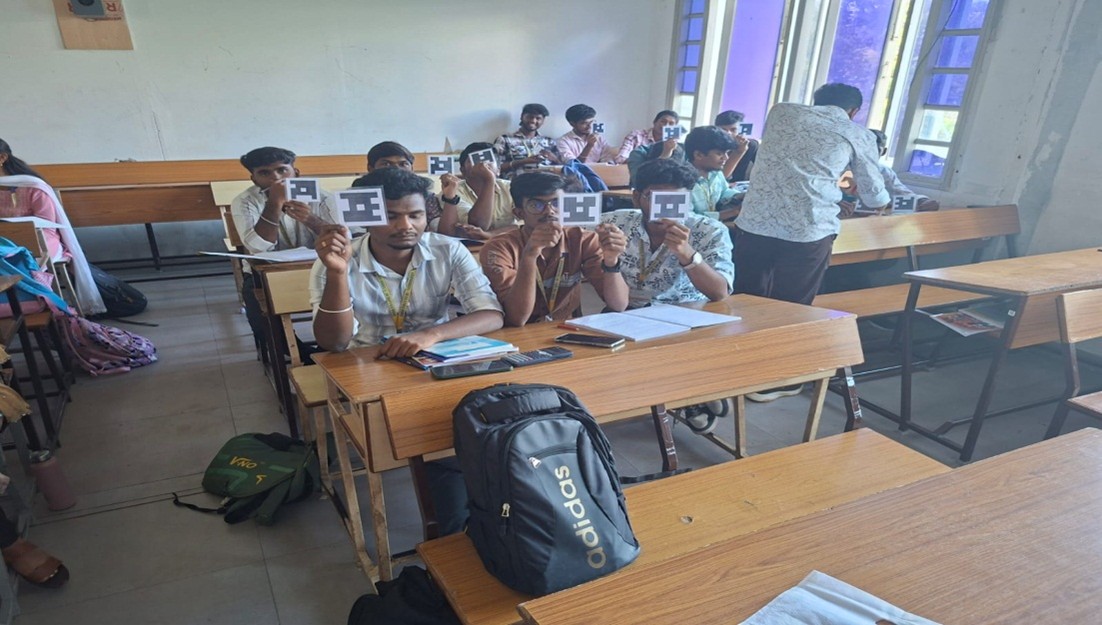
Crossword Puzzles Activity in Teaching
Impact Analysis: The use of crossword puzzles in teaching has led to a noticeable improvement in student engagement and concept retention. Students actively participate and enjoy the learning process, which enhances their motivation and interest in the subject. This method helps in reinforcing key terms and concepts, making it easier for students to recall information during assessments. It also promotes critical thinking, problem-solving, and collaborative learning skills when done in groups. As an outcome, students demonstrate better understanding, improved vocabulary, and higher academic performance, while teachers observe more active classroom participation and enthusiasm for learning.
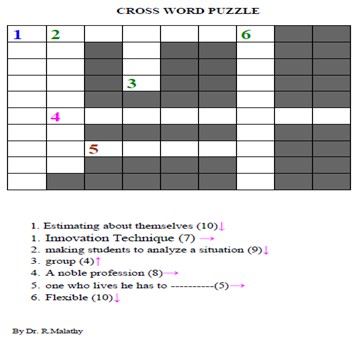
Career Quiz Cards Activity in Teaching
Impact Analysis: The use of placement cards has enhanced student engagement and classroom interaction. It encourages teamwork, communication, and critical thinking while helping students organize and connect ideas effectively. Teachers have observed improved concept clarity and retention, as students learn by doing rather than just listening. As an outcome, this method makes learning more participatory, enjoyable, and meaningful, leading to better academic performance and deeper understanding of the subject.
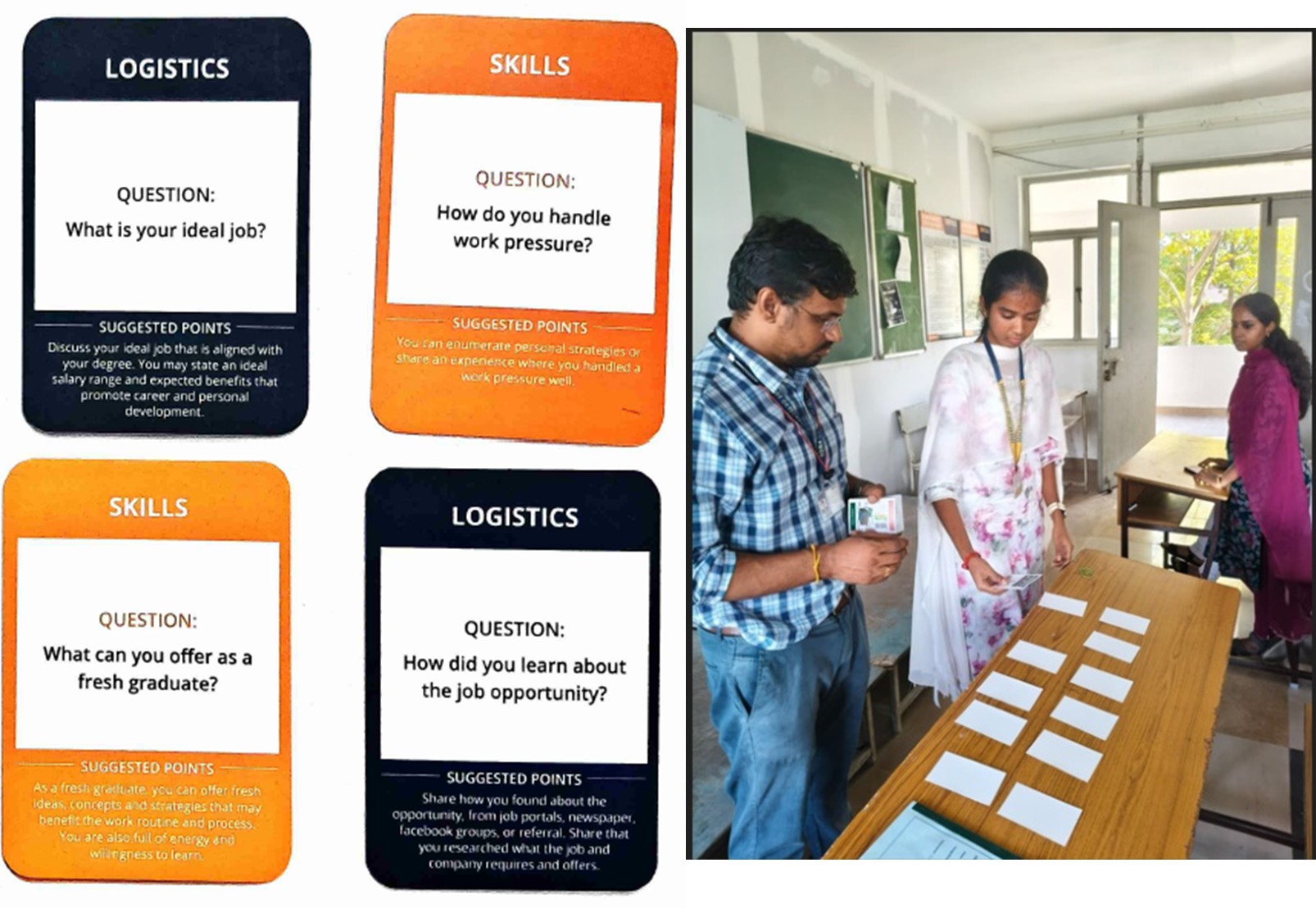
Resources Available in Civil Engineering
Titles: 1391 Volumes: 3857 Journal/Magazine: 22 e-Journals: 46
List of Journals and Magazines
| S.No | Journal/Magazine |
|---|---|
| 1 | Journal of the Indian Road Congress |
| 2 | Indian Highways |
| 3 | Journal of Structural Engineering |
| 4 | New Building Materials & Construction World |
| 5 | Recent Trends in Civil Engineering & Technology |
| 6 | The Journal of The Indian Institute of Architects |
| 7 | Journal on Civil Engineering |
| 8 | Journal of Flood Engineering and Science Research |
| 9 | Journal of Hydropower and Civil Engineering |
| 10 | Journal of Surveying and Structural Engineering |
| 11 | Journal of Construction Engineering Technology & Management |
| 12 | Journal of Water Resource Engineering and Management |
| 13 | IUP Journal of Structural Engineering |
| 14 | Inventi Impact Civil Engineering |
| 15 | Highway Research Journal |
| 16 | Architectural Record |
| 17 | Architecture + Design |
| 18 | Builders Line |
| 19 | Kattunar Kural (Builders Voice) |
| 20 | Construction World |
| 21 | Down to Earth |
| 22 | MGS Architecture |
List of e-Journals
| S.No | e-Journal |
|---|---|
| 1 | IEEE Geoscience and Remote Sensing Letters |
| 2 | IEEE Geoscience and Remote Sensing Magazine |
| 3 | IEEE Intelligent Transportation Systems Magazine |
| 4 | IEEE Transactions on Geoscience and Remote Sensing |
| 5 | IEEE Transactions on Sustainable Energy |
| 6 | Transportation Research Part C: Emerging Technologies |
| 7 | Engineering Failure Analysis |
| 8 | International Journal of Rock Mechanics and Mining Sciences |
| 9 | International Journal of Engineering Science |
| 10 | Building and Environment |
List of Research Search Platforms
| S.No | Resource | Website |
|---|---|---|
| 1 | Turnitin-iThenticate with AI detection capabilities | https://sonatech.turnitin.com |
| 2 | Grammarly | https://www.grammarly.com |
| 3 | DELNET | https://discovery.delnet.in |
